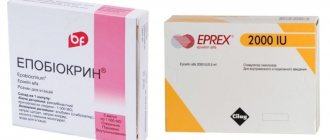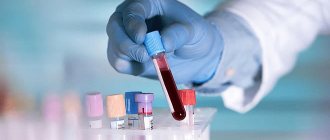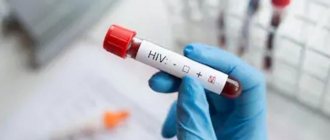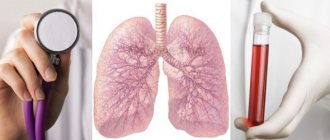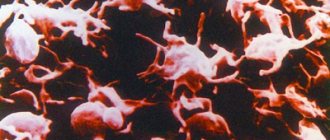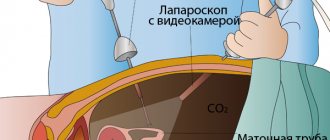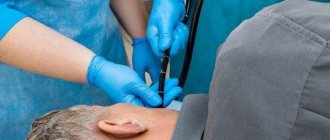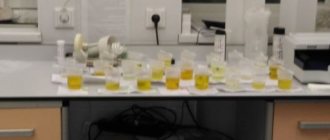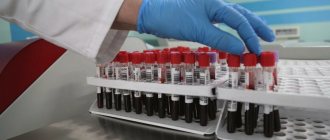Importance of Testing
Thanks to timely tests, it is possible not only to identify and isolate infected people in advance, but also to see an objective picture of morbidity and mortality. Reliable test results for Covid-19 allow us to draw conclusions about the epidemiological situation both in general and for individual countries and cities, as well as age and professional categories.
Based on the data obtained, scientists can predict the rate of spread of infection and adjust existing preventive measures, adding new ones or weakening existing ones.
Today, scientists in most countries are actively working on the creation of test systems and their introduction into mass production, since the success of the fight against the pandemic is largely determined by early diagnosis and rapid initiation of treatment.
Fact! If there is still no universal cure for Covid, then the number of tests for Sars-CoV-2 has already exceeded a hundred.
However, the statistics for countries are ambiguous: the incidence rate does not always decline where more tests are done. This is explained by the fact that the number of tests performed does not correspond to the number of people examined. Some passed three tests, while others passed none. The main thing here, as in any business, is not quantity, but quality.
Who is tested first?
The current priorities for Covid-19 testing are:
Priority 1
Ensures optimal treatment options for all hospitalized patients, reduces the risk of healthcare-associated infections and maintains the integrity of the healthcare system.
First of all, the following are tested:
- Hospitalized patients
- Healthcare workers with symptoms
Priority 2
Ensures that people at high risk of complications from infection are quickly identified and triaged accordingly.
- Patients in long-term care facilities (nursing homes, etc.) with symptoms
- Patients 65 years of age and older with symptoms
- Common patients with symptoms
Priority 3
If resources allow, people who are currently working are checked.
- Workers with symptoms who keep public infrastructure running
- Individuals who do not fit any of the above categories with symptoms
- Healthcare workers and first responders, including volunteers
- People with mild symptoms in communities experiencing high numbers of COVID-19 hospitalizations
Non-priority
- Persons without symptoms
Kinds
Covid-19 can be diagnosed in different ways, including the classic ones - bioassays on mice and tissue cultures, contamination of chicken protein, bacterial culture, etc. But all of them are quite complex, expensive and time-consuming to study.
Modern tests, which are mainly used in practice, are divided into 2 types: the polymerase chain reaction method and serological methods, including rapid tests. With the help of the latter, antibodies in the blood to coronavirus are determined.
PCR test
This is a molecular genetic analysis that shows the number of viral particles - virions - in the body. If there is a certain level of infection that can be detected in the laboratory, PCR will give a positive result. It does not matter whether a person has symptoms or not.
Coronavirus test results can be positive or negative. The head of the laboratory reports the positive outcome within two hours to the nearest branch of Rospotrebnadzor, where he transfers the biomaterial for re-testing. And only after confirmation is a diagnosis made.
A negative result does not guarantee the absence of infection. Test systems have a sensitivity limit, so they may not notice a small amount of the virus. The doctor decides what to do next. Repeated analysis is carried out if the following conditions are met:
- serious suspicion of infection remains;
- there are typical symptoms of Covid – cough, fever;
- CT scan shows lung damage.
Test forms may differ in different clinics.
To confirm recovery from Covid-19, two negative PCR test results must be obtained. Only after this will the patient’s sick leave be closed and he will be released from self-isolation. This is the requirement of Rospotrebnadzor.
Antibody test
This test itself does not detect coronavirus. It is done to find out whether a person has had an infection, whether he is currently sick or has already recovered. The results can be of three types:
- the level of specific antibodies IgA or IgM is high, IgG is very low or not at all - the person became infected about a week ago and is most likely still sick;
- IgA, IgM, IgG are present in the blood if no more than 14 days have passed after recovery;
- a high IgG level with minimal values or absence of IgA or IgM means that the person had Covid more than two weeks ago.
Fact! IgM antibodies appear in the blood approximately 7 days after infection, and in a recently infected patient the test may give a false negative result. This is why it is not suitable for diagnosing infection.
What is a stool test?
It is this test that doctors usually give a referral for if they suspect helminthiasis. A child must have a stool test for worms upon admission to preschool, swimming pool and school.
Therefore, parents should know how to take a stool test for worm eggs. The technique is more than simple. After going to the toilet, you need to collect a little feces in an impenetrable, tightly closed container. It is advisable to indicate on it the patient’s data and the date of collection of the analysis.
Bowel movements should be natural. Laxatives and enemas should not be used to prevent inclusion of undigested food, starch, and fats into the sample. Jars for testing are sold in pharmacies. If the patient has problems with morning stool, then the analysis can be collected the day before. It can be stored in a closed container in the refrigerator for a day.
Where to look
You can check your coronavirus test result by looking at your electronic medical record. Information arrives within 2-4 days after the biomaterial is taken for analysis. A person receives a detailed transcript of the results of PCR and ELISA tests in electronic form, which is very convenient and safe.
Let us remind you that some private clinics, including Hemotest and Helix, have received permission to examine patients for coronavirus infection. Any person, if desired, can be checked here, even without having direct evidence for this.
If you get access to your electronic card in advance, you won’t have to wait long for the results. As a rule, it appears the very next day. It is useless to contact the clinic receptionist, since the doctor will have the form with the results.
Access to the medical record can be obtained through the government services portal. To receive the service, you need to enter your passport data, which must match the data specified during registration in the “my documents” section. The system will also ask you to enter your compulsory medical insurance policy and mobile phone number.
The answer to any question regarding the electronic medical record can be obtained on the public services portal
Data verification may take 3-5 days, but more often access opens within a few hours. In case of any problems, you must contact the MFC by phone or in the “my documents” section. Such issues cannot be resolved at the clinic or with a doctor.
Fact! The test result comes by email.
Answers on questions
What the result looks like
The form with answers for the PCR test looks like a table, where in the corresponding columns it is indicated that RNA was detected/not detected. There are only 2 lines - on the first there is Sars-CoV-2 (Covid-19) RNA in a smear from the nasopharyngeal mucosa, on the second - Sars-CoV-2 RNA (Covid-19) in a smear from the oropharyngeal mucosa.
What does primary positive mean?
The problem of initial positive or false positive results is especially common during large-scale testing for a rare or new disease. In relation to this case, this means that the PCR analysis showed the presence of the virus in the body, whereas in fact the person is healthy.
The frequency of false-positive test results depends on the specificity of the tests. For example, with a specificity of 99%, there will be only 1 incorrect result in 100 patients.
When creating special conditions, when there are obviously negative or positive samples, achieving 100% specificity is quite simple. However, in reality, and especially when used on a large scale, any diagnostic method (PCR is no exception) will inevitably fail. The only question is how difficult it is to obtain truly positive results.
The likelihood of obtaining questionable results is lower when the frequency of occurrence of the desired infection is low. It is this factor that is decisive in this matter. Of course, the quality of test systems, compliance with the rules for sampling and studying them matter.
Considering the above, the positive result is confirmed twice. For maximum reliability, studies are duplicated on different test systems.
Previously, primary diagnostics using the PCR method was carried out only in a few certified centers of Rospotrebnadzor, and conditionally positive results were confirmed at the state virological institution Vector. Incorrect indicators were very rare.
Taking tests once is not enough, according to doctors. To make an accurate diagnosis, a PCR test is done twice if there are no symptoms of acute respiratory infections, and three times if they are present.
However, after the start of large-scale testing, and many different test systems and laboratories were involved in this work, the situation changed. There are more false positive results, which should be taken into account when taking tests.
How to know when the analysis is ready
The patient receives information about the test results via SMS. How many days it will take depends on various factors: for some, the message is delivered only after a day, even with a negative result, while others have to wait several days. If the result is positive, the alert is sent very quickly.
Why don't they report
SMS messages are most often delayed for one reason – the test is negative. Most government medical institutions announce only positive test results.
General rules for preparing for a stool test
Preparing for the test is as important as the diagnosis itself. Therefore, the following recommendations have been developed.
Rules for preparing for the analysis:
- feces must be collected in the morning: immediately before collection, it is necessary to carry out hygienic procedures for the genitals and anus using soap. Excretions, blood, drops of urine from the genitourinary organs should not get into the biomaterial, and fragments of feces should not be collected from the toilet - this can qualitatively affect the results;
- if feces are taken for the study of occult blood: then a few days before its collection, special preparation of the body is required, namely, to refuse to eat foods containing large quantities. A day before the test, stop taking medications so as not to provoke chemical coloring of the stool;
- if the test is intended to identify microbes and infections that provoke dysbacteriosis: then it would be advisable to adhere to a strict diet for several days. Only in this way will the coprogram be able to determine what is the main cause of dysbiosis - infection or malnutrition.
Biomarkers - nonspecific diagnostics
Biomarkers—measures that serve as indicators of health status—are needed to early identify categories of people at high risk of severe Covid-19. The most commonly used are general and biochemical blood tests, which help identify markers that correlate with various degrees of infection severity. This way you can prevent complications and slow down the progression of the disease.
Significant diagnostic criteria for coronavirus are procalcitonin, eosinopenia, lymphopenia, and neutrophilia.
Procalcitonin
How contagious is a person with coronavirus?
Procalcitonin is produced by the thyroid gland, liver and lungs. Its level increases significantly when a bacterial infection is attached. Normally, procalcitonin values do not exceed 0.05 ng/ml; with a viral infection, they can increase to 1 ng/ml or remain normal.
The inflammatory process is accompanied by a sharp increase in the production of this substance, the level of which can reach 20-200 ng/ml in just 6-12 hours, which requires antibacterial therapy.
Eosinopenia
A decrease in the level of eosinophils in the blood is typical for those infected with Covid, but does not depend on the nature of its course. It can serve as a marker if there are characteristic external signs of infection and changes in the lungs that are visible on a computed tomogram or x-ray.
Lymphopenia
A decrease in the number of lymphocytes is observed in most patients. These are immune cells, which increase in number as the infection spreads. Particularly severe lymphopenia develops in severe cases of the disease with a high risk of death.
Neutrophilia
Neutrophils are a type of white blood cell, an increase in the level of which is also associated with severe Covid-19 and is caused by the destruction of lung tissue cells. They synthesize so-called neutrophil extracellular traps (NEL) to eliminate the virus.
A cytokine storm is uncontrollable inflammation that causes damage to the body's own cells.
However, excessive NEL activity aggravates the course of the disease and can lead to death, since the activation of immune cells entails a cytokine storm.
The body produces an excess amount of anti-inflammatory cytokines, which trigger the mechanism of hyperimmune lung inflammation. In addition, extracellular traps can be the basis for the formation of blood clots. This is why it is so important to inhibit neutrophil activity.
Bacteriological studies
Discharge from the eyes
The material is taken from the affected areas at the height of the inflammatory process in compliance with the rules of asepsis. At least 5-6 hours before the study, all medications and procedures are canceled. The doctor takes the material with a separate swab for each eye.
Conjunctiva
If there is abundant purulent discharge, use a sterile dry cotton swab to take pus from the inner surface of the lower eyelid moving towards the inner corner of the palpebral fissure. It is necessary to ensure that the eyelashes do not touch the tampon (hold the eyelids with your hands).
Edge of the eyelids
Crusts of pus are removed with tweezers. The material is taken from the sore at the base of the eyelashes.
Cornea
The material for research is taken after anesthesia with a sterile dry cotton swab.
Nasal discharge
The material from the nasal cavity is taken with a dry sterile cotton swab, which is inserted deep into the nasal cavity. A separate swab is used for each nasal passage.
Nasopharyngeal discharge
Material from the nasopharynx is taken with a sterile posterior pharyngeal cotton swab, which is inserted through the nasal opening into the nasopharynx. If a cough begins, the tampon is not removed until it is over. To test for diphtheria, films and mucus from the nose and throat are examined simultaneously.
Oral material
Material from the oral cavity is taken on an empty stomach or 2 hours after a meal with a sterile cotton swab from the mucous membrane or its affected areas at the exits of the ducts of the salivary glands, the surface of the tongue, and from ulcers. If there is a film, remove it with sterile tweezers.
Ear material
The doctor takes the material for inflammation of the middle ear. The skin of adjacent areas is treated with an antiseptic solution.
